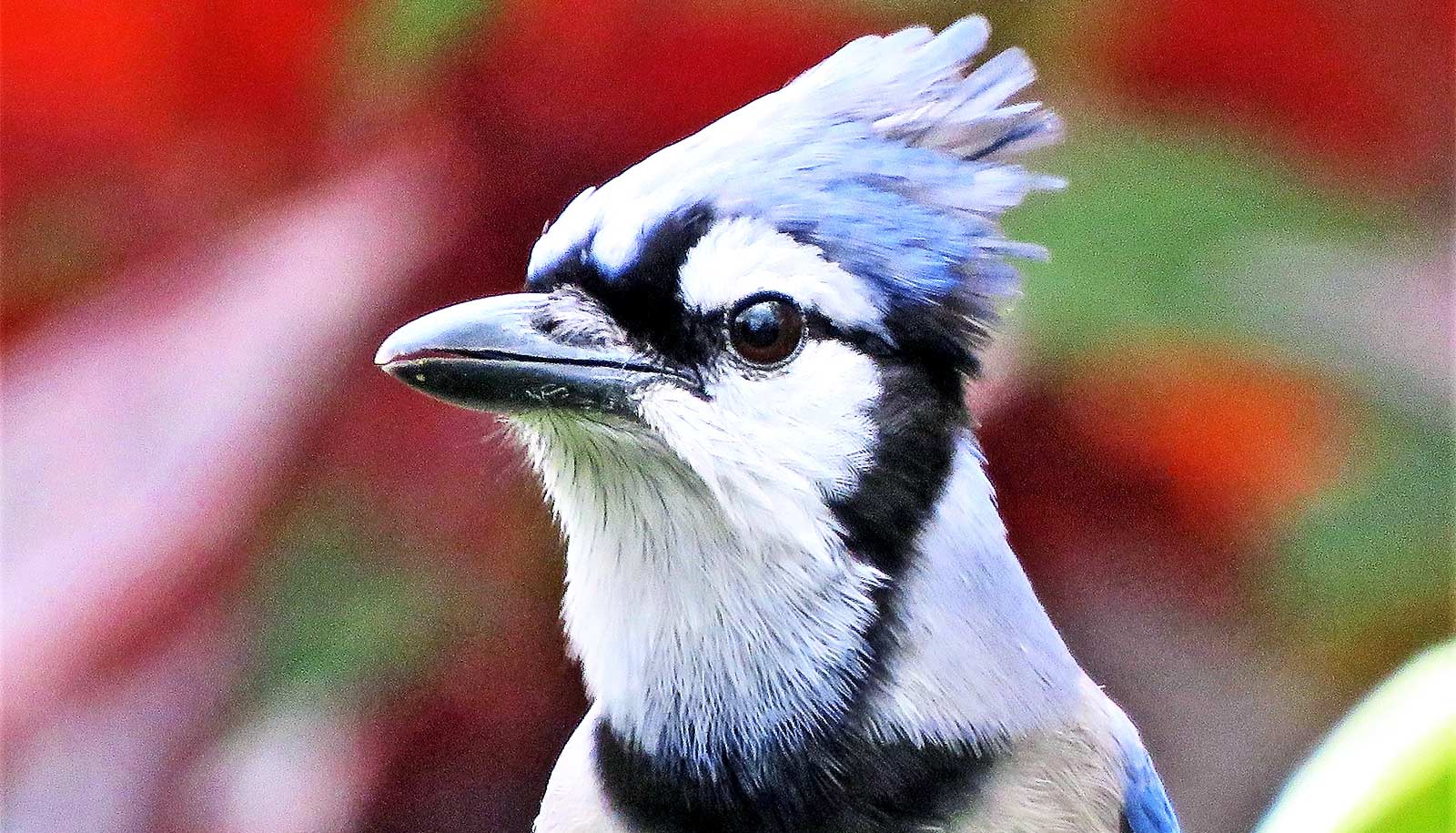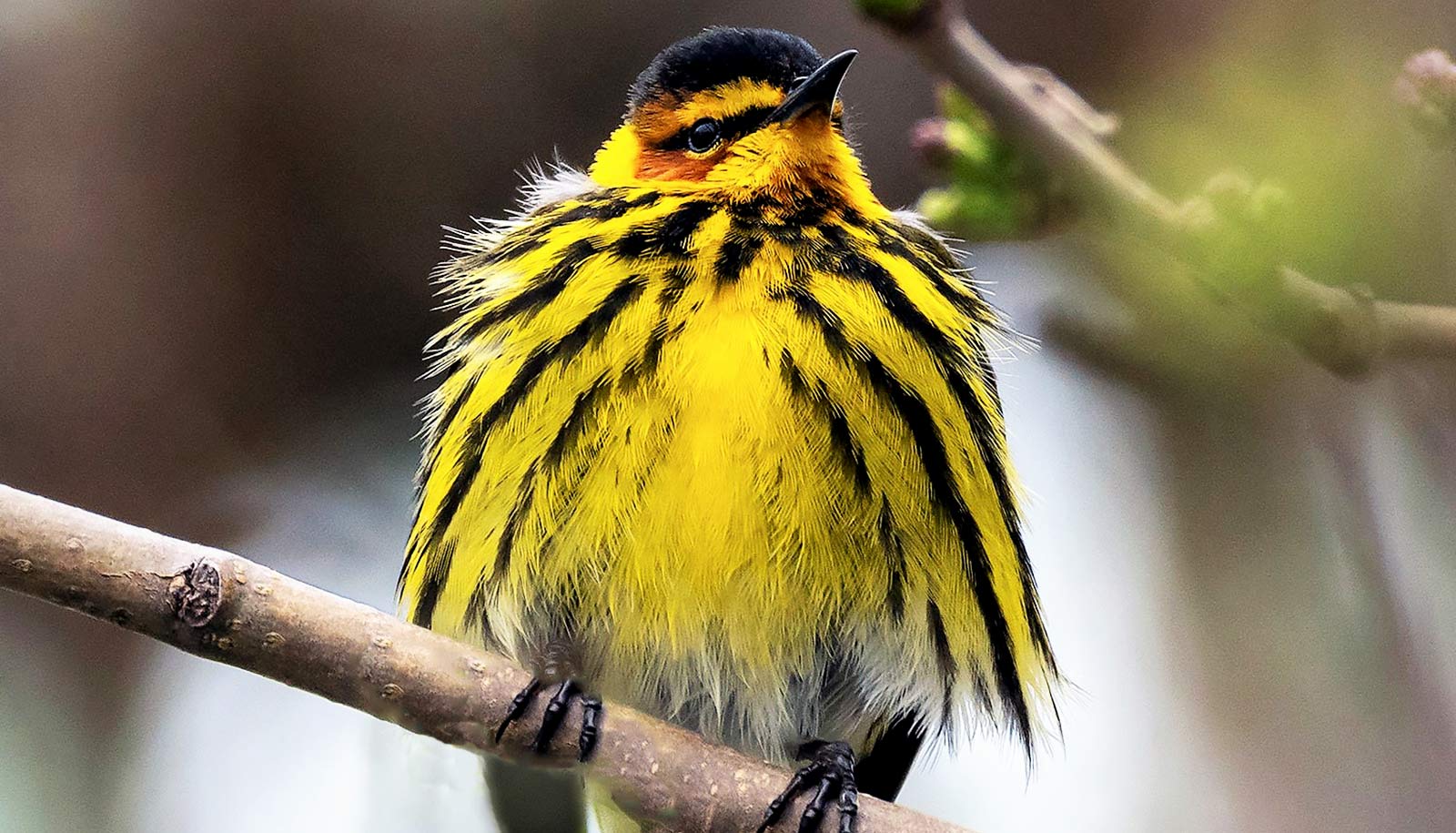
(Credit: Susan Young/Flickr )
Colorful bird feathers may explain evolution paradox
"Ever-increasing specialization and precision should be an evolutionary dead end, but that is not the case." Bird feathers may solve the evolution mystery.
The evolution of colorful bird feathers in North America may explain a paradox within the theory of evolution, researchers say.
This is the paradox: The life forms that exist today are here because they were able to change when past environments disappeared. Yet, organisms evolve to fit into specific environmental niches.
“Ever-increasing specialization and precision should be an evolutionary dead end, but that is not the case. How the ability to fit precisely into a current setting is reconciled with the ability to change is the most fundamental question in evolutionary biology,” says Alex Badyaev, a professor of ecology and evolutionary biology at the University of Arizona and coauthor of a new paper in Nature Communications .

Two possible solutions
There are two general possible solutions, according to the new research.
First, the mechanisms that enable organisms to fit well into their current environment and the mechanisms that enable change in adaptations are distinct—the latter are suppressed as organisms fit better and better into their current setting and activated only when the environment changes.
The second is that the mechanisms that make organisms fit into current environments are themselves modified during evolution.
“Distinguishing between these possibilities is challenging because in evolutionary biology we necessarily study processes that occurred in the past, the events that we missed,” he says.
“So, instead, we infer what we missed from comparisons of species that exist today. Although this approach can tell us how well the current organisms fit into their current environment, it cannot tell us how they got here.”
Ultimately, the first scenario was supported by the researchers’ work. The mechanisms that make organisms locally fit and those responsible for change are distinct and occur sequentially in evolution.
House finch feathers and evolution
The researchers aimed to directly observe adaptation to new environments in action while specifically paying attention to the mechanisms involved.
“Carotenoids are large molecules, and stuffing them into growing feather is a messy process, resulting in all kinds of structural modifications and aberrations to feathers.”
The house finch, a ubiquitous Sonoran Desert bird that over the last century has spread throughout most of North America and now occupies the largest ecological ranges of any living bird species, provided just such an opportunity.
Birds color themselves by eating and integrating pigmented molecules called carotenoids into their feathers .
“Carotenoids are large molecules, and stuffing them into growing feather is a messy process, resulting in all kinds of structural modifications and aberrations to feathers,” Badyaev says. “This presents a unique opportunity to study how well-characterized developmental mechanisms that produce an intricate feather co-evolve with unpredictable external inputs needed to color them.”
In feathers where structural integrity is essential, such as in temperature-regulating down or flight feathers, mechanisms evolve that buffer feather growth from incorporating carotenoids. For this reason, flight feathers or down feathers are almost never colorful in any bird species.
On the opposite end of the spectrum, ornamental feathers benefit from being colorful and evolve mechanisms that modify their structure to enable greater incorporation of carotenoids and to enhance their presentation.
The authors took advantage of this diversity and studied how this array of mechanisms—from complete buffering of carotenoids to fully embracing them—actually evolves.
Replaying the tape of evolution
The sources of carotenoid pigments differ across the house finch’s huge range. In native desert populations, finches obtain their pigments from cactus pollen and fruits, while in urban populations they get them from newly introduced plant species and bird feeders. In northern populations, they incorporate the pigments from grass seeds, buds and berries.
“We got to replay the tape of evolution of this adaptation, instead of deducing the process from the outcome.”
“As expected, within each of these locations finches have evolved precise adaptations to incorporate diverse local carotenoids into their feathers,” Badyaev says. But the unique aspect of this study is that “we knew the colonization routes of these birds, which enabled us to observe how they modify these adaptations as they move from one location to the next over the last century.”
This approach not only allowed the team to directly study the process of evolution but also enabled them to study repeated evolution in the wild, because birds evolved distinct local adaptations in parallel from known starting points as they spread through the continent.
“We got to replay the tape of evolution of this adaptation, instead of deducing the process from the outcome,” Badyaev says.
The team established 45 study populations along colonization routes that the species took from its native southern Arizona to the northwestern United States. They also explored how species changed within regions, such as between Arizona desert populations and urban populations on the University of Arizona campus and in Tucson.
In all of these populations they examined microscopic structure and complete carotenoid composition in thousands upon thousands of feather samples. The unprecedented scale and depth of the study—believed to be the largest of its kind in a wild bird species—led to two discoveries.
First, evolution proceeded by remarkably similar sequences from widely diverse starting points. Unfamiliar local carotenoids exerted major modifications in developing feathers at first, but the longer birds persisted in a region and the more familiar they became with local carotenoids, the better there were able to incorporate them into their feathers, eventually evolving precise local adaptations.
Second, and most importantly, although carotenoids and their mixtures differed strongly between locations as distinct as deserts and northern evergreen forests, the mechanisms behind their incorporation into growing feathers were remarkably uniform and not specific to biochemical properties of individual carotenoid compounds.
Instead, in all populations, evolution resulted from changes in mechanisms that buffered previous local adaptation from external stressors. These general stress-buffering mechanisms—what Badyaev called “the guardians of local adaptations”—had to be recruited to allow evolution of new adaptations.
In other words, “the boundaries of current adaptations become bridges between successive adaptions in evolution,” Badyaev says.
The next step for the authors is to study the origin of molecular and developmental mechanisms they implicated in stress-buffering processes in evolution.
Source: University of Arizona
The post Colorful bird feathers may explain evolution paradox appeared first on Futurity .
Share this article:
This article uses material from the Futurity article, and is licenced under a CC BY-SA 4.0 International License. Images, videos and audio are available under their respective licenses.
Related Articles:
Why so many colorful little warblers? These 2 genes
Nov. 30, 2020 • futurityWhy so many colorful little warblers? These 2 genes
Nov. 30, 2020 • futurityLinks/images:
- https://doi.org/10.1038/s41467-020-16938-7
- https://www.futurity.org/hybrid-warblers-2403492-2/
- https://www.futurity.org/evolution-repeatability-chance-1914872/
- https://news.arizona.edu/story/how-boundaries-become-bridges-evolution
- https://www.futurity.org/bird-feathers-evolution-specialization-paradox-2422792/
- https://www.futurity.org

